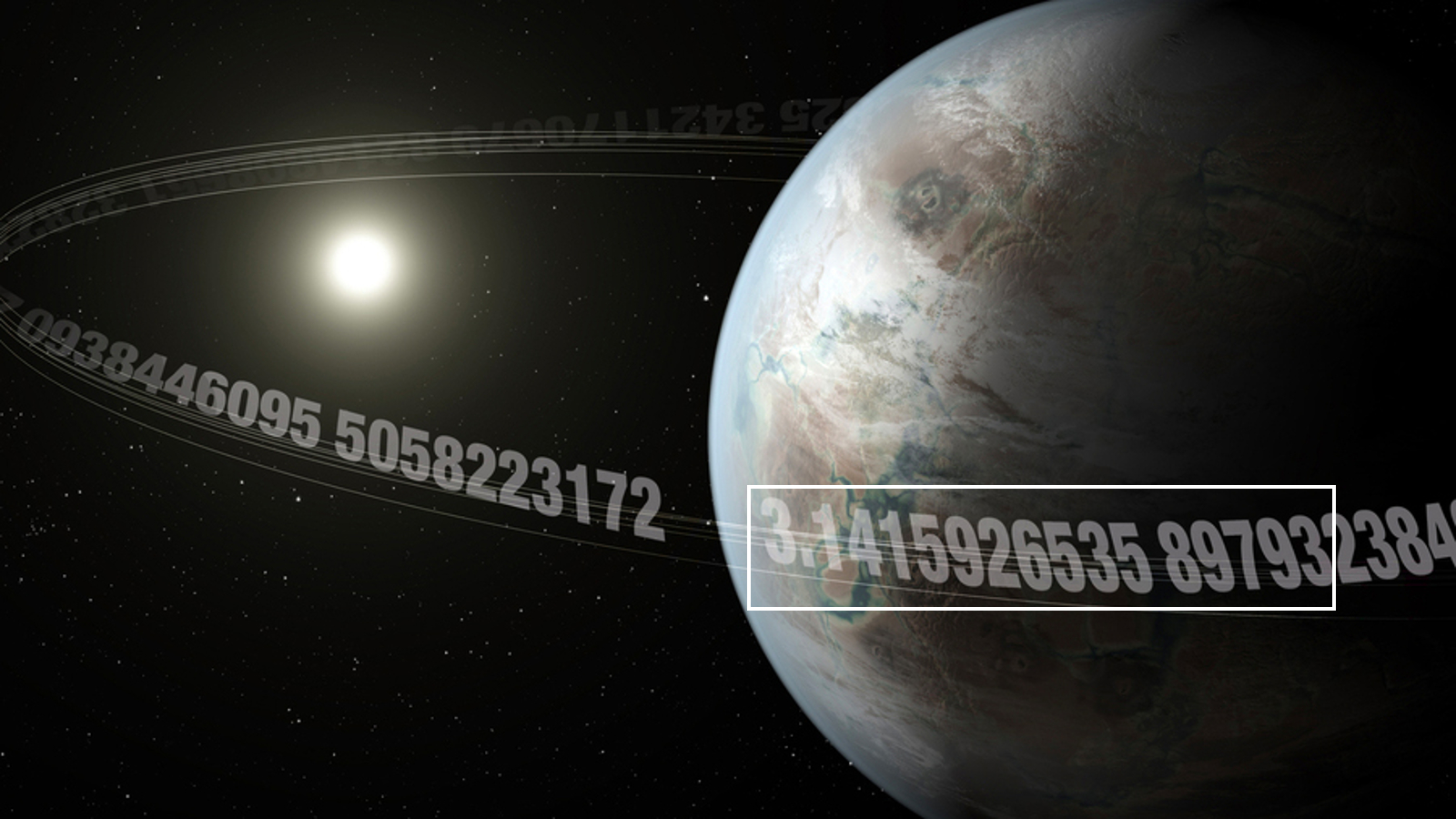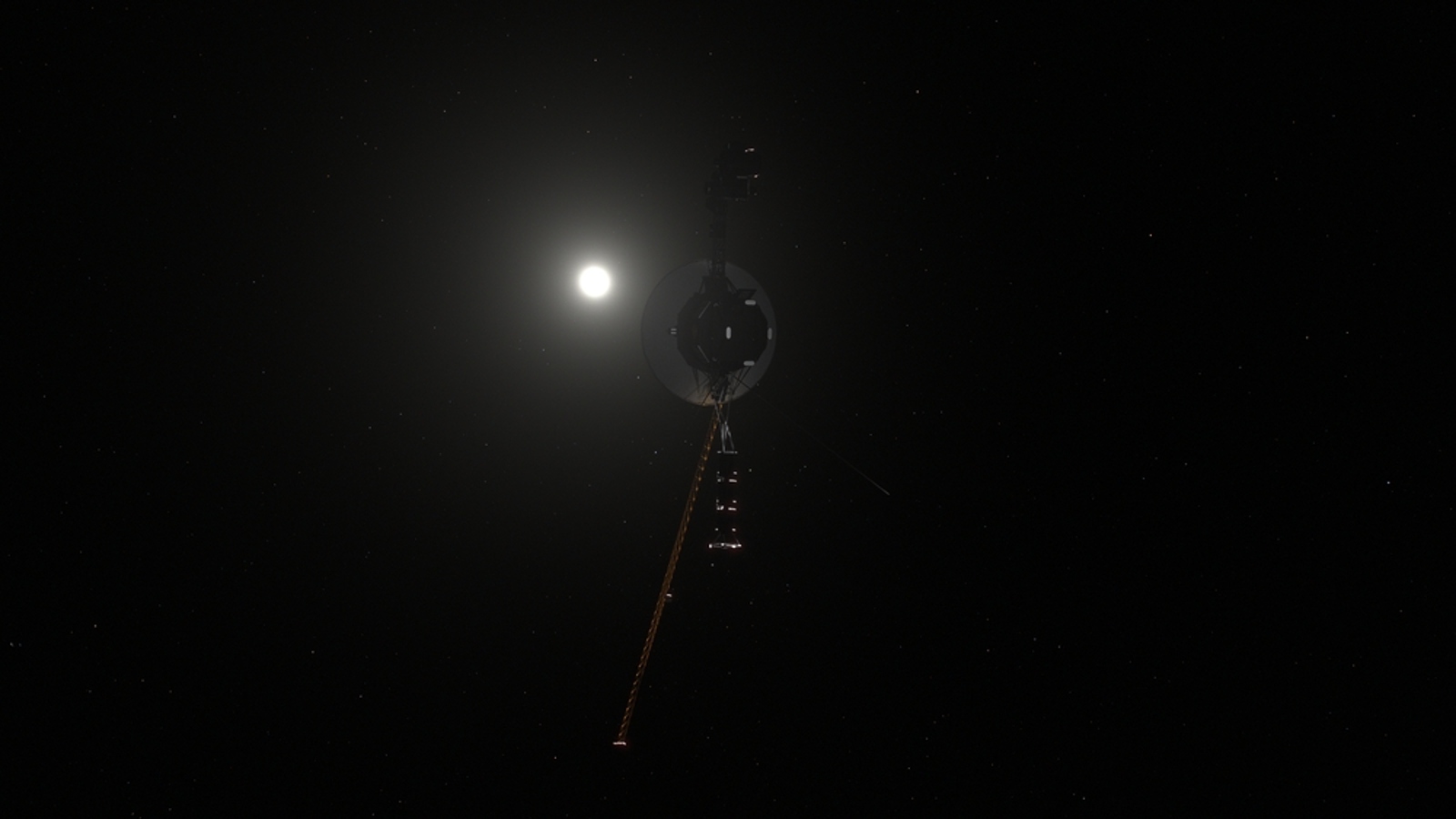
Pi is an irrational number, meaning it has an infinite number of nonrepeating decimal places. But it turns out, NASA scientists need only a small slice of pi — the first 15 decimal places — to solve most of their math problems. And even when working out problems on the most mind-bending cosmic scales, they never need more than a few dozen extra digits.
You may remember pi from school. It's the ratio between a circle's diameter (the distance between opposite points) and circumference (the distance around the edge). Simply put, pi is equal to the circumference of a circle divided by its diameter, which means you can figure out the circumference of any circle if you know its diameter or radius (half the diameter) and pi, which is most commonly abbreviated as 3.14 — which is why Pi Day is celebrated on March 14.
We currently know more than 105 trillion digits of pi, thanks to a computer company that crunched the number for 75 days. But after that, pi's decimal places are a complete mystery to us.
However, you need to memorize only the first few decimals of pi for most real-world applications. And even if you're a NASA scientist, you can get away with knowing just 15, especially if you're only studying our solar system. (With 15 decimal places, pi looks like this: 3.141592653589793.)
The reason scientists don't need to bother including any more digits in their calculations is that the numbers they are using, even at planetary or stellar scales, are too small for additional decimal places to have any real effect on the output value, according to NASA's Jet Propulsion Laboratory.
Related: The universe would not make sense without mathematics

Take our planet: Earth has a diameter of around 7,900 miles (12,700 kilometers), which means its circumference is around 24,900 miles (40,100 km). If you were to calculate this exact circumference with the first 16 digits of pi (the number three followed by 15 decimal places) and a more accurate version of pi with hundreds of decimal places, the difference between the two answers would be around 300 times less than the width of a human hair, according to NASA.
The error gets greater the larger the number you use. But for most practical calculations NASA scientists need to make, the difference is still negligible.

For example, the Voyager 1 probe, which is now in interstellar space, is currently more than 15 billion miles (24 billion km) from Earth. If you wanted to calculate the circumference of a circle with this distance as the radius, the difference between using the first 16 digits of pi compared with hundreds of digits would be less than the width of a little finger, according to NASA.
However, some calculations still require more decimal places.
For example, if you wanted to calculate the circumference of a circle that encapsulated the known universe, the radius of that circle would be around 46 billion light-years — the distance light has traveled since the Big Bang when factoring in the expansion of the universe. In this case, you would need 38 decimals of pi to get a value with the same level of accuracy with which we can currently measure the width of an atom, according to NASA.
Edit: This article was updated on March 15 after a new world record for the known digits of pi was achieved.







